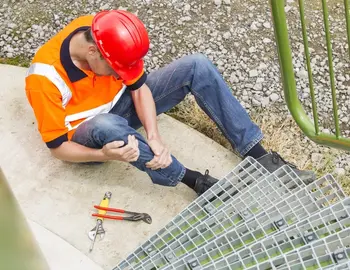When we talk about fall safety for the workplace, you may decide to take it casually. This may be because you experience fall often and it looks like there is no big deal about it.
Let me shock you with a piece of information concerning the impact of fall published by CDC (Center for Disease Control):
Falls Are Serious and Costly
- One out of five falls causes a serious injury such as broken bones or a head injury.
- Each year, 3 million older people are treated in emergency departments for fall injuries.
- Over 800,000 patients a year are hospitalized because of a fall injury, most often because of a head injury or hip fracture.
- Each year at least 300,000 older people are hospitalized for hip fractures.
- More than 95% of hip fractures are caused by falling, usually by falling sideways.
- Falls are the most common cause of traumatic brain injuries (TBI).
- In 2015, the total medical costs for falls totaled more than $50 billion. Medicare and Medicaid shouldered 75% of these costs.
What is Fall
Most times, fall doesn’t go alone. It goes with the cause; this is why you mostly here people say “Slip and Fall“.
A slip and fall accident is a fall that occurs when an individual loses traction or stumbles, causing a fall to the ground. It can be caused by slippery floor, uneven floor or badly lit stairwell. Falls can occur on a single level, from one level to a lower level, or potentially down several levels, such as stairs.
However, in this post we will be concentrating on the Fall Safety Tips for the Workplace which will help minimize fall accidents in the workplace. Lets delve into it.
Fall Safety Tips for the Workplace
- Wear proper footwear: Your foot wear must be suitable for the work you are doing and the location. It must have a firm grip on the floor to avoid slip and fall.
- Keep floors clear and clean: Unclean floor as always said is den of accident. An unclean floor promotes tripping hazards which can also result to a fall, so keep floor clean.
- Ensure proper lighting: If you are working in a dark area, make sure you provide proper lighting so that you do not stumble on materials.
- Practice ladder safety: If you are working from a ladder, make sure you practice ladder safety like maintaining the 3-Point contact always.
- Clean spills immediately: If you notice any spill, make sure you clean it out or assign someone to do that to prevent slip.
- Covering cables that cross walkways: Cable leads form another tripping hazard, so make sure they are covered or well arranged by the corner of the workplace where there is no thoroughfare.
- Use fall protection: If you are working in an elevated location, please ensure that fall protection is install to barrier employees from falling to a lower level.
- Inspect your PPE: Inspect your PPE to ensure they are in a good state to serve their purpose; especially the ones directly involve with fall prevention. Example, your safety boots, body harness, etc.
- Remove obstacles: Make sure you remove obstacles along the moving path to prevent trip and falls
- Practice good housekeeping: Good housekeeping ensure that things are placed where they won’t cause additional danger and it also involve clearing the workplace from debris.
- Provide proper training: Employees must be aware of the risk associated with falls and their duties in preventing it.
- Remove fallen leaves: If it is an open workplace, fallen leaves should be removes as it can cause a mirage cover for an open hole.
- Report unsafe conditions: Any condition that you feel it not safe should be reported for prompt attention. Example is unguarded holes around your work area, uncovered manholes, etc.
- Use slip-resistant mats: Slip resistant mat may be used to reduce the risk of falls where necessary.
- Use caution signs: Clearly mark wet or slippery areas with caution signs.
- Never use a ladder that hasn’t been properly inspected by a competent person
- Use fall protection gear: Ensure employees working at heights have the appropriate fall protection gear, including harnesses and lifelines.
- Boost your vision: If you have problems with your eyesight, be sure to see your doctor and get glasses or contacts as needed.
- If you are working from a scaffold, trestles make sure that are situated on a stable ground, well set up and certified okay for use.
- Work with the weather: Working in inclement weather can make it more difficult to maintain traction, so it is essential to be aware of the forecast and take necessary precautions.
- Don’t carry anything that’s large enough to block your vision
- Never stand on a chair, table or surface on wheels
- Be aware that alcohol or other drugs, including prescription and over-the-counter medicine, can affect your balance and increase your risk of falling. You may need to avoid them when working.
In conclusion, fall is not something you should take for granted as no one can actually ascertain the consequence of a fall; do everything possible to prevent it. This is why this topic “Fall Safety Tips for the Workplace” is very important, you can implement these measures and more.
Related Posts
What Is A Physical Hazard; Everything You Should Know
19 Proven Reasons Why PPE Is Important
When Should PPE Be Used in the Workplace?
10 Basic Rules Of Scaffolding You Should Never Ignore
Health And Safety Induction For New Employees: What You Need To Know

